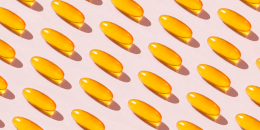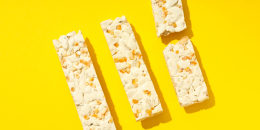Thanksgiving is a time to enjoy time with loved ones, and of course, food. But the cooking-centric holiday also presents many opportunities for mishaps in the kitchen.
Some cooking mistakes have more dire consequences than others — a dry turkey may taste terrible, but an undercooked one can sicken your guests with food poisoning.
Foodborne illnesses are caused by eating or drinking something contaminated with pathogens such as bacteria, viruses or parasites, according to the U.S. Centers for Disease Control and Prevention.
Common foodborne pathogens include salmonella, norovirus, clostridium perfringens, escherichia coli, and listeria, per the CDC. These can contaminate Thanksgiving favorites like turkey and side dishes, especially if food isn't handled or cooked properly.
The symptoms of food poisoning — diarrhea, stomach cramps, and vomiting — typically resolve on their own within a few days, but they can become severe or deadly. Children under five, adults over 65, people with weakened immune systems and pregnant women are at higher risk, per the CDC.
It's important that everyone, from novice cooks to seasoned chefs, take steps to prevent foodborne illness and keep guests safe. Here are the most common food safety mistakes people make while cooking for Thanksgiving and how to avoid them.
Not washing your hands well or often enough
Washing your hands before, during, and after cooking is an essential food safety practice during Thanksgiving and any other time you prepare food for others.
“Cleaning our hands for a full 20 seconds with soap and water can really go a long way in cutting down the amount of bacteria on our hands before we start preparation,” Robert Gravani, professor emeritus of food science at Cornell University, tells TODAY.com.
Pathogens from our unwashed hands can be introduced into food, Gravani says, where they can grow and multiply.
Frequent hand-washing also helps prevent cross-contamination while handling raw turkey that won’t get cooked, Gravani says, so it’s especially important after touching raw meat or poultry.
Always make sure you dry washed hands on a clean paper towel or cloth. If you have any open cuts or wounds on your hands, make sure these are bandaged properly and wear plastic gloves, Gravani notes.
Cooking or handling food if you’re sick
You've planned, shopped and prepared everything so you can hit the kitchen running on Thursday morning — but if you wake up sick or had a stomach bug recently, you may want to consider finding a replacement cook.
According to the CDC, you should avoid cooking food for others while you are sick and for at least two days after symptoms stop.
Gastrointestinal symptoms like vomiting or diarrhea could be signs of norovirus, a highly contagious virus that can spread to others through contaminated food via unwashed hands, per the CDC. One sick chef can spread the virus to multiple guests.
Norovirus is the leading cause of foodborne illness outbreaks in the U.S., and spreads year-round — but activity peaks during the winter months, TODAY.com previously reported.
Anyone with COVID-19 symptoms should test immediately and avoid gathering with other people until they feel better.
Using the same cutting board or utensils for everything
It’s important to keep raw poultry and meats separate during the cooking process to avoid cross contamination.
“Use one cutting board or plate for raw meat, poultry and seafood and a separate cutting board or plate for produce, bread and other foods that won’t be cooked,” Laura Ford, Ph.D., epidemiologist in the division of foodborne, waterborne and environmental diseases at the CDC, tell TODAY.com.
The same goes for utensils like kitchen tongs, spoons and spatulas. If you plan on using the same cutting board or utensils to cook all your Thanksgiving food, this requires strict hygiene.
“We need to make sure that we clean all those utensils very well after they come in contact with the raw poultry or meat,” says Gravani. Cutting boards, countertops and any other tools should be washed thoroughly with hot, soapy water after preparing each food item, says Ford.
Undercooking food with raw eggs and raw flour
Raw eggs and raw flour are common ingredients in Thanksgiving foods like pie, cookies, cakes, casseroles and stuffings — yes, most flour is actually raw, Ford explains.
This means the flour hasn’t been treated to kill any germs, per the CDC, so it needs to be cooked properly or it can make you sick. Raw eggs and raw flour can be contaminated with salmonella, E. coli or other germs, says Ford.
That means not eating cookie dough or anything with raw flour and raw eggs that isn't cooked to 165 degrees Fahrenheit, according to the U.S. Department of Agriculture.
Rinsing off a raw turkey in the sink
"Don't wash the turkey, or any poultry for that matter," says Gravani. Why? First, is isn't effective — it's "virtually impossible" to wash bacteria off the turkey, according to the USDA, which also recommends against rinsing off raw turkey before cooking.
Additionally, if salmonella or other bacteria is present, it can splash and spread all over the kitchen sink, counter and other surfaces, which can contaminate other foods, like produce, that won't get cooked.
Not defrosting the turkey properly
A common Thanksgiving food safety mistake many people make is leaving a frozen turkey on the counter to thaw, says Gravani.
Letting the turkey sit at room temperature will allow parts of the bird to thaw faster and sit in the “danger zone,” or between 40 degrees Fahrenheit and 140 degrees Fahrenheit, says Ford.
Once the raw turkey enters the danger zone, any organisms that are present like salmonella will grow and multiply rapidly, Gravani says.
Instead, defrost your frozen turkey in the fridge, cold water or a microwave, says Gravani. Defrosting time will vary based on the method you use and the size of the turkey, so planning is key. Proper defrosting ensures the turkey will stay at a safe, consistent temperature.
- Refrigerator: defrost for 24 hours for every 4 to 5 pounds of turkey.
- Cold water: defrost for 30 minutes for every pound of turkey and change the water every 30 minutes.
- Microwave: check the owner's manual and make sure the turkey will fit inside, then defrost for about six minutes for every pound of turkey, per the USDA.
Once your turkey is thawed and seasoned, it should be cooked as soon as possible, Gravani says. This minimizes the amount of time the raw turkey is sitting at room temperature in the danger zone.
Cooking stuffing inside the turkey
Cooking stuffing inside the turkey is an age-old practice, but it's too risky for the experts.
“We recommend putting the stuffing in a casserole dish ... which makes it easier to ensure that the stuffing is thoroughly cooked,” says Ford, adding that a food thermometer should be inserted into the center to make sure it reaches 165 degrees Fahrenheit.
“You can you can still have the same great flavor and everything, but it’s much safer,” says Gravani.
Not using a meat thermometer for the turkey
Use a meat thermometer, not your eyes, to tell if your turkey is cooked properly. "We can't just look at the color of a product or the texture of a product to determine doneness," says Gravani, adding that turkeys are large, which makes it more difficult to determine if the entire bird is cooked thoroughly or not.
"A food thermometer is the best way to tell whether that product is done and whether those organisms are killed," says Gravani. All poultry should be cooked to an internal temperature of 165 degrees Fahrenheit at the thickest part of the bird, he adds. Stick the probe through the breast or under the wing until it reaches the center.
Letting cooked food sit out for over two hours
It's fairly common to serve Thanksgiving food buffet-style, and having it sit out while people enjoy their meal and return for seconds or thirds. But cooked or perishable food has about two hours until it needs to be stored and refrigerated, says Gravani.
Bacteria like clostridium perfringens bacteria can produce spores, which grow and multiply rapidly in cooked food left to sit between 40 and 140 degrees Fahrenheit for longer than two hours, says Ford.
Not checking your refrigerator temperature
The refrigerator temperature should be set to at least 40 degrees Fahrenheit or lower, says Gravani, which ensures that it will keep everything cold enough and at safe temperatures. This is especially important when the fridge will be stuffed with warm leftovers.
The freezer should be set to zero degrees Fahrenheit or below, says Ford, which will ensure any leftovers are thoroughly frozen.
Not dividing up leftovers before storing
Instead of putting foil over the turkey or a big dish of stuffing and putting it into the fridge, cut these items up into smaller pieces first and put them in several shallow containers, says Ford.
Dividing and storing your food in smaller containers makes it easier to cool down, says Ford, and it also makes it easier to reheat. All leftovers should be reheated to 165 degrees Fahrenheit, and you can use a meat thermometer for accuracy, the experts note.










